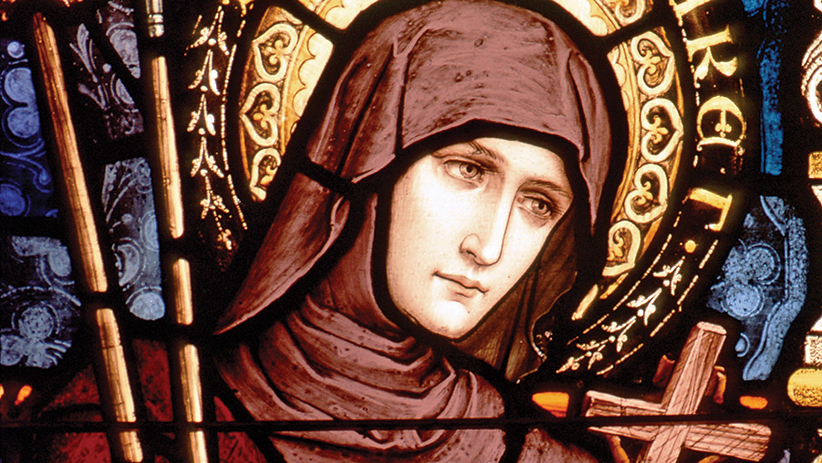In his biography of St. Margaret, Francois Mauriac, the French author and Nobel laureate, tells us that as a child Margaret possessed a sweet, loving temperament — as long as she got her way. In her village Margaret’s good looks and quick wit attracted attention, especially the attention of older boys. Margaret, who would not let anyone tell her what to do, discovered that with a little skillful flirting she could get boys to do almost anything she wanted them to do. When she was about 14 years old she caught the eye of Arsenio, the 16-yearold son of the local baron; he invited Margaret to live at the castle as his mistress. Margaret accepted.
For Margaret her new life was idyllic. A rich young man said he loved her. She had escaped the harsh life of a peasant to live in ease and comfort in a castle where servants did everything for her. The only thing that marred Margaret’s happiness was Arsenio’s candid avowal that he would never marry her. A baron’s son might have a peasant as his mistress, but he could not marry her. Nonetheless, Margaret believed she could change his mind. When she gave birth to Arsenio’s son, she thought the baby would persuade him to marry her. It never happened.
Margaret had lived as Arsenio’s mistress for nine years when he left the castle for a few days to tend to some business at one of his family’s estates. He did not return on the day he was expected. Nor the day after. Nor the day after that. Then Arsenio’s dog showed up alone. The dog’s behavior made Margaret nervous. It cowered in corners and whined. Suddenly it took her skirt in its mouth and, backing up, pulled her toward the door. As Margaret followed the dog outside she felt a terrible sense of dread. The dog led her deep into the woods, then stopped at a pile of dead branches and dry brush where once again it began to whimper. Margaret’s hands trembled as she cleared away the dead wood. Beneath the pile, lying in a shallow pit, she found Arsenio, dead and decaying.
Who killed Arsenio? No one knows. But Margaret’s mind was not on the culprits: for the first time in a long time she was thinking about the state of her soul. She and Arsenio had lived in sin together for nine years and had never been sorry about what they were doing. Now she wondered if at the last moment Arsenio had had time to repent. And she wondered, if death took her suddenly, would she have the sense to beg God for His mercy and forgiveness?
Determined to make a fresh start, Margaret took her little boy and left Arsenio’s castle. She headed for the hilltop town of Cortona where, she had heard, the Franciscan fathers helped repentant sinners. The Franciscans of Cortona were kinder than Margaret imagined. They found a home for her and her son. They assigned two Franciscan priests to be her spiritual directors. When Margaret’s son was old enough, the Franciscans arranged for him to go to school.
The priests suggested that Margaret devote herself to good works, so she served as nurse to the poor in Cortona. She became such a skilled midwife that the women in labor insisted that no one but Margaret care for them.
After Arsenio’s sudden death, Margaret became especially devoted to the poor souls in purgatory. For the rest of her life she prayed earnestly for the dead. When Margaret herself was dying, she had a vision of a vast company of souls streaming out of heaven: They were the souls she had ransomed from purgatory with her prayers.
As a young woman, Margaret had made a bad decision, but she turned her life around, found a stable home for her child, found a career for herself, and found spiritual and emotional comfort from the Franciscans of Cortona. For these reasons, she is a good role model for single mothers.
St. Margaret of Cortona is the patron saint for women raising children alone, and invoked against sexual temptation. Her feast day is February 22.
Thomas Craughwell is the author of more than 30 books, including “Saints Behaving Badly” and “This Saint Will Change Your Life.”

